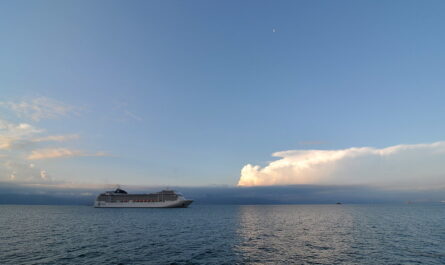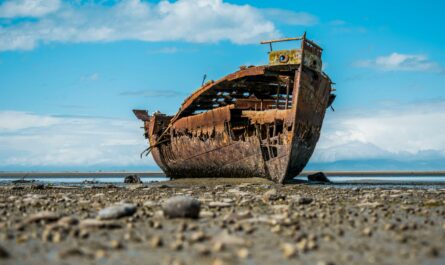World War II was a global conflict that spanned every corner of the Earth, but perhaps no arena was as crucial to the outcome of the war as the Atlantic Ocean. The Battle of the Atlantic, which raged from 1939 to 1945, was the longest continuous military campaign of the war and one of the most vital. It was not a single battle but rather a protracted and complex struggle for control of the Atlantic shipping lanes, which were crucial for the supply of troops, food, weapons, and resources between the Allies and their overseas territories.
This extended campaign involved a series of key naval engagements, innovations in submarine warfare, convoys, and air support, all of which shaped the war at sea. The Atlantic Ocean became a strategic battleground, and the outcome of this fight was essential for the survival of the Allies and the eventual defeat of the Axis powers.
In this article, we will explore the major naval battles that defined World War II in the Atlantic, the tactics and technologies that played pivotal roles, and the broader significance of the Atlantic theater in determining the course of the war.
The Strategic Importance of the Atlantic
The Atlantic Ocean was a lifeline for the Allied war effort, especially for Great Britain. The island nation relied heavily on maritime supply routes for food, oil, and weapons. If the Nazis had successfully cut off these vital links, Britain would have been starved of resources, making it vulnerable to invasion or capitulation. The United States also played a crucial role in supplying the Allies, particularly after its entry into the war in 1941, and the Atlantic Ocean was the highway by which U.S. troops, equipment, and supplies reached Europe.
For Germany, cutting off this supply chain was a strategic imperative. The Nazis deployed their formidable submarine fleet—known as U-boats—to disrupt and destroy Allied shipping, hoping to choke off Britain’s ability to fight. At the same time, the Allies needed to ensure the safe passage of their merchant ships to prevent their economies from collapsing and to maintain the flow of essential war materials.
The Battle of the Atlantic was fought primarily between the German Kriegsmarine (Navy), particularly their U-boat arm, and the Allied navies, which included the British Royal Navy, the Canadian Navy, and later the U.S. Navy. Air forces from both sides also played a significant role as they hunted down submarines or provided aerial cover for convoys.
Key Naval Battles and Campaigns of World War II in the Atlantic
Several critical naval battles and campaigns shaped the outcome of the Battle of the Atlantic and, by extension, the war itself. These engagements not only determined control of the shipping lanes but also showcased the evolution of naval strategy and technology during the war.
1. The First Battle of the Atlantic (1939-1941)
The early years of the Battle of the Atlantic were marked by German dominance. Shortly after the outbreak of war in 1939, the German navy began its campaign to strangle Britain’s supply lines. The British had developed a convoy system, where merchant ships were grouped together and escorted by warships, to protect against U-boat attacks. However, in the initial stages, the convoy system was not fully developed, and the British were under-prepared for the scale of the U-boat threat.
German U-boats, under the command of Admiral Karl Dönitz, adopted a strategy known as wolfpack tactics. Instead of attacking individually, U-boats would operate in groups, coordinating attacks on Allied convoys during the cover of night. These tactics proved devastating in the early stages of the war, leading to the loss of many Allied merchant ships.
One of the early naval actions of this period was the sinking of the British passenger liner SS Athenia on September 3, 1939, the very day that Britain declared war on Germany. Although the Germans initially claimed it was an accident, it was the opening salvo in what would become a brutal and unrelenting battle.
Another notable incident during this period was the sinking of the British battleship HMS Royal Oak in October 1939 by German U-boat U-47 while it was anchored in Scapa Flow, one of the Royal Navy’s main bases. This bold attack demonstrated the audacity and effectiveness of German submarines in the early phase of the war.
2. The Battle of the River Plate (December 1939)
The Battle of the River Plate was one of the first major naval engagements of World War II and involved surface ships rather than submarines. The German pocket battleship (or heavy cruiser) Admiral Graf Spee had been wreaking havoc on Allied merchant shipping in the South Atlantic. In December 1939, a British task force consisting of three cruisers—HMS Exeter, HMS Ajax, and HMNZS Achilles—intercepted the Graf Spee off the coast of Uruguay near the River Plate estuary.
The battle was fierce, and although the British cruisers were outgunned, they managed to damage the Graf Spee significantly. Captain Hans Langsdorff of the Graf Spee decided to take refuge in the neutral port of Montevideo, Uruguay. Under diplomatic pressure from Britain, Uruguay demanded that the German ship leave port within 72 hours. Faced with the prospect of a hopeless battle with British forces waiting outside the harbor, Langsdorff scuttled the Graf Spee to prevent it from falling into enemy hands.
The Battle of the River Plate was a morale-boosting victory for the Allies early in the war, and it highlighted the importance of surface engagements in the Atlantic, even though the primary threat remained the U-boats.
3. The Bismarck Campaign (May 1941)
One of the most famous naval battles in the Atlantic during World War II was the hunt for the German battleship Bismarck, one of the largest and most powerful warships ever built at the time. The Bismarck, along with the heavy cruiser Prinz Eugen, embarked on a mission to break into the Atlantic and attack Allied convoys in May 1941. The Royal Navy immediately launched a massive effort to track down and sink the formidable battleship.
The British battlecruiser HMS Hood, regarded as one of the most powerful ships in the Royal Navy, along with the battleship HMS Prince of Wales, intercepted the Bismarck and Prinz Eugen in the Denmark Strait on May 24, 1941. In the ensuing battle, the Hood was hit by a German shell and exploded, sinking in minutes with the loss of all but three of its 1,418 crew members. The loss of the Hood was a shocking blow to British morale.
Determined to avenge the loss, the Royal Navy pursued the Bismarck relentlessly. After a series of engagements and a torpedo strike by British aircraft that disabled the Bismarck’s rudder, the German battleship was cornered by British warships and sunk on May 27, 1941. The destruction of the Bismarck was a significant strategic and symbolic victory for the Allies and demonstrated the importance of sea power in controlling the Atlantic.
4. The Battle of the Atlantic (1942-1943): The Turning Point
By 1942, the Battle of the Atlantic reached its most critical phase. German U-boats had spread throughout the Atlantic, operating off the U.S. East Coast in what was known as the Second Happy Time or Operation Drumbeat. American ships, initially unescorted, became easy targets for the U-boats, resulting in heavy losses.
The tide began to turn in 1943, however, due to a combination of technological advances, better tactics, and increased coordination among the Allies. One of the most significant developments was the increased use of radar and sonar (ASDIC) to detect U-boats before they could attack. Allied aircraft, especially long-range consolidated B-24 Liberators, played a crucial role in providing air cover for convoys and hunting down U-boats.
The Allies also improved their convoy escort tactics, using escort carriers, destroyers, and corvettes to protect merchant ships more effectively. The development of Hedgehog and depth charge technologies also improved the Allies’ ability to destroy submerged U-boats.
The culmination of these efforts was the decisive defeat of the German U-boat force in what became known as the Black May of 1943. In May alone, the Allies sank 43 U-boats, marking a significant turning point in the Battle of the Atlantic. From this point onward, the German U-boat threat diminished, and the Allies were able to maintain the critical flow of supplies across the Atlantic.
5. The Normandy Invasion (June 1944)
Although the Battle of the Atlantic was primarily about securing the sea lanes for merchant shipping, naval operations in the Atlantic were also essential for the success of the D-Day landings in Normandy in June 1944. The invasion of Nazi-occupied France required the transportation of vast numbers of troops, vehicles, and supplies across the English Channel from Britain to France.
The Allies’ control of the Atlantic ensured that they could build up the necessary forces for the invasion without interference from the German navy. The success of the Normandy landings was a key moment in the defeat of Nazi Germany, and it would not have been possible without the hard-fought victories in the Battle of the Atlantic that preceded it.
Technological and Tactical Innovations in the Atlantic Theater
The Battle of the Atlantic saw significant technological and tactical innovations that were essential in overcoming the German U-boat threat.
- Convoy System: The convoy system, in which merchant ships sailed in groups protected by warships, was a key tactic that helped mitigate the losses caused by U-boat attacks. Although convoys were initially vulnerable, improvements in escort techniques and better coordination eventually made convoys much more effective.
- Codebreaking: Allied codebreakers, particularly at Bletchley Park in the UK, played a crucial role in the Battle of the Atlantic by breaking the German Enigma code. This allowed the Allies to anticipate U-boat movements and reroute convoys to avoid them.
- Aircraft: The use of long-range aircraft to patrol the Atlantic was a game-changer. Aircraft could spot U-boats on the surface, forcing them to dive and reducing their ability to attack convoys. Planes like the PBY Catalina and B-24 Liberator were instrumental in closing the “air gap” in the mid-Atlantic, where U-boats had previously operated with relative impunity.
- Advanced Weaponry: The development of new anti-submarine weapons, such as depth charges and the Hedgehog anti-submarine mortar, significantly improved the Allies’ ability to destroy U-boats. These weapons allowed surface ships to attack U-boats both at depth and on the surface.
The Legacy of the Battle of the Atlantic
The Battle of the Atlantic was a pivotal theater of World War II. The outcome of this long struggle determined whether the Allies could maintain the vital supply lines necessary for victory. The defeat of the German U-boat threat ensured that Britain could continue fighting and that the United States could build up the forces needed to invade Europe.
The lessons learned during the Battle of the Atlantic also had a lasting impact on naval warfare. The importance of air power in naval operations, the use of codebreaking in military strategy, and the development of anti-submarine warfare tactics all shaped the future of naval combat.
Conclusion
The Atlantic Ocean was not just a battlefield of naval ships and submarines during World War II; it was the lifeline upon which the survival of nations depended. The key naval battles of the Atlantic, from the early U-boat campaigns to the sinking of the Bismarck and the turning point in 1943, defined the war at sea and played a critical role in determining the outcome of the conflict.
The Battle of the Atlantic was not only a testament to the bravery and skill of the sailors, airmen, and commanders involved, but it also highlighted the importance of innovation and adaptation in warfare. As the longest continuous campaign of World War II, it underscored the vital role that control of the seas plays in global conflict—a lesson that remains relevant to this day.



